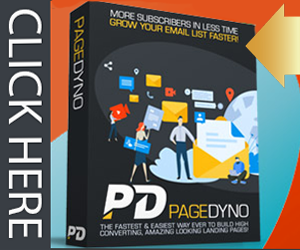Cody Moya’s Featured Article: Search Engine Optimization
Cody Moya’s featured article titled “Search Engine Optimization: Your Page Content” discusses SEO tactics such as adding fresh content and including reciprocal links.
Cody Moya’s featured article titled “Search Engine Optimization: Your Page Content” discusses SEO tactics such as adding fresh content and including reciprocal links.
Cody Moya’s featured article is reprinted here:
Search Engine Optimization: Your Page Content
According to SearchEngineWatch.com, a recent survey of businesses using the Internet as a primary marketing tool reported that only 11% said SEO gave a lower return on investment than search advertising. More importantly, 35% said that SEO was more valuable in terms of return on investment than paid advertisement.
This means that in 89% of businesses who could determine the relative value, inexpensive search engine optimization of page content was as valuable or more valuable than paying for advertising on Google, Yahoo, or other pages and search engines. A full third of all businesses found SEO to be the most valuable advertising tool to use with search engines.
This is remarkable news because, with patience and attention, anyone can optimize their page content for search engine placement. This means that your little computer business, with its tiny marketing budget, can compete in search engines with international corporations if you do things properly.
SEO: Making Your Page Work
So how do you harness this incredible tool to make your own page’s ROI higher? By understanding the search engines and how they work, and by taking steps to ensure your page is optimized for best usability by these engines.
First, search engines use text-based algorithms. They send out miniprograms regularly called search engine spiders, robots, or web crawlers that catalog the data contained in web pages – data in the form of text – and use that to determine where to place a page in search engine returns on keywords.
So when your potential customer types in “butterfly handkerchief,” the placement and frequency of your keyword phrase “butterfly handkerchief” is one of the main things a search engine pays attention to when deciding where to rank your page.
If you are the only “butterfly handkerchief” site that is clearly demonstrating you offer these by placing the keyword phrase in the header, metatags, and text of your page, then you’ll get first ranking. If Billy Bob’s Hankies does a better job of this, he will get top ranking, bumping you down.
But that’s not all the search engines look for.
Content Has An Expiration Date?
Because there are so many billions of web pages search engines are trying to organize, some sites are going to do equivalently good jobs of inserting those keyword phrases. There has to be a way of organizing pages beyond that phrase.
One way is cataloging regular fresh content. A website that delivers different content on a regular basis containing the same keywords is a site that will rank higher in the search engines. So if you rotate your “butterfly handkerchief” articles frequently while Billy Bob gets lazy and leaves the same one up for a year, you’ll regain that top spot you lost.
A second advantage to using continual fresh content is that it gives your customers something to come back for. Repeat customers are among the most valuable. If you continue to provide excellent content to this customer base, you’ll find them returning to – and spending money at – your site on a regular basis.
Not everyone has the time to create continual fresh content, of course, especially content optimized for the search engines with good keyword placement. One way to always have fresh content on hand is to purchase private label articles at www.YourOwnArticles.com to place on your site.
These are articles pre-written and pre-optimized for the search terms you need. You purchase private label rights to the articles – once you’ve paid for them, they are yours to use as you see fit. You can edit them, add or delete information, personalize them to your content, and even list yourself as the author if you like.
Reciprocal Links
A third item the search engines look at when cataloging you is linking. If you have great content and lots of other web sites link to you, this will boost your ranking.
That’s why the New York Times is placed high in a search for “The New York Times,” even though their name is mentioned infrequently on any given page; the search engines see other sites linking to the content contained there.
This helps the engines, which are really big programs with very good logic and artificial intelligence, determine that the New York Times website is the primary site for this term.
Your little site will probably never have the name recognition of the New York Times. But if you make agreements with complementary websites to link to one another, particularly if you link within articles or at least not on “My Favorite Links” pages, you can boost your ranking quite a bit.
And if you offer great information on your site, other sites will be more eager to link to you. After all, when they link to you, they’re recommending you to their customers. They wouldn’t want to recommend someone who won’t reflect well on them.
If you trade reciprocal links with another webmaster, check occasionally to ensure that your link is indeed posted, and posted correctly. And do the same courtesy for them – be sure you have their link up and active somewhere it will be noticed on your website.
Here For Your Success
Cody Moya
ABOUT THE AUTHOR:
Cody Moya writes about Article Marketing in his free 50 parts
course on Article Marketing. You can sign up for his free
Article Marketing Course and get additional information at his
website: http://www.articlemarketingcourse.com
Comments are closed.




